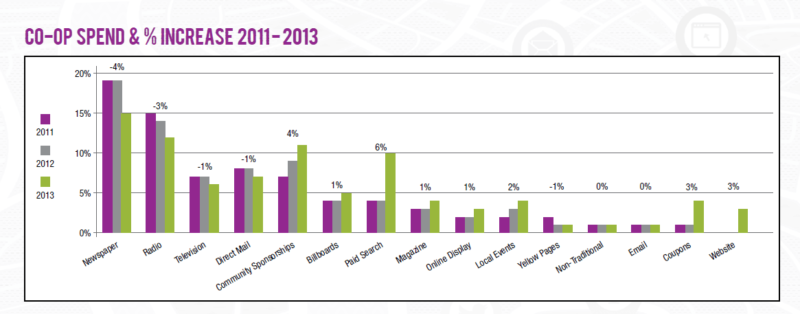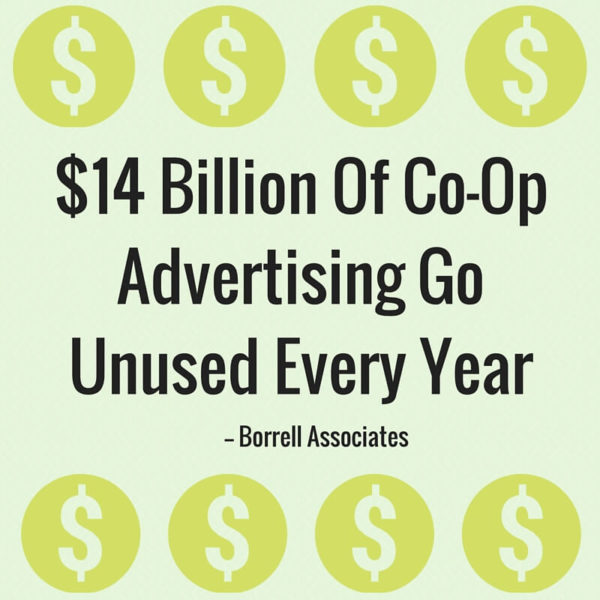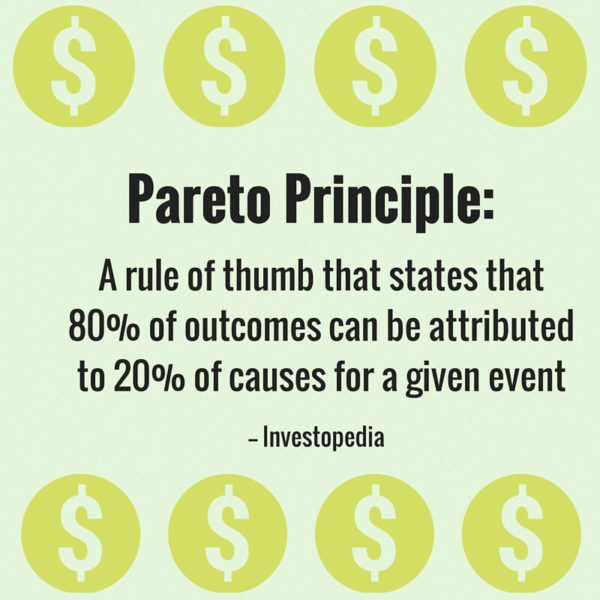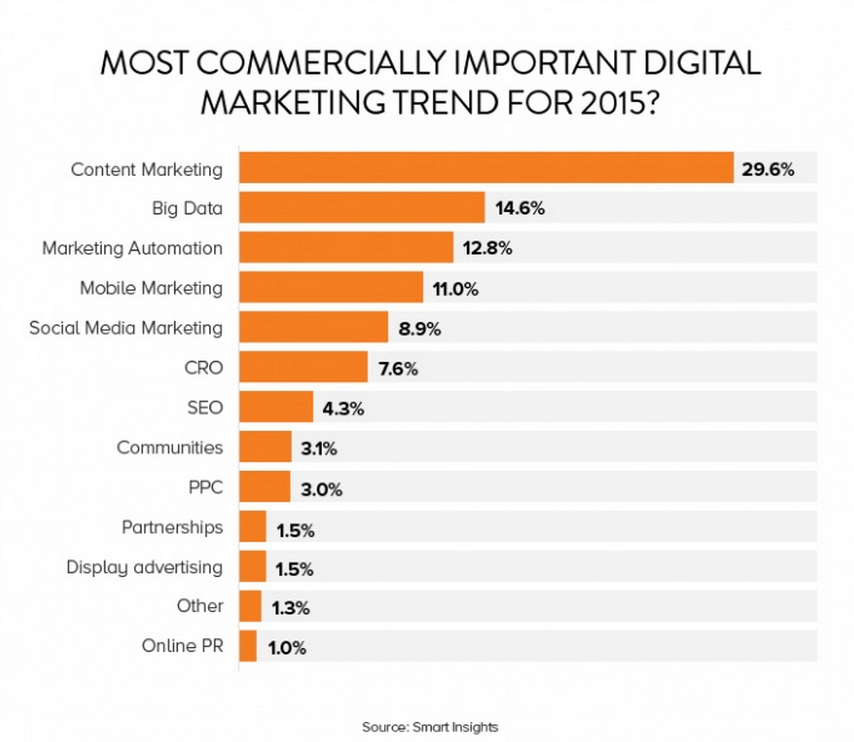14 Billion Reasons You Must Look At These 5 Underutilized Local Marketing Strategies
These overlooked search and marketing practices save you time, require minimal investment, or even pay for themselves. Columnist Wesley Young shows you how to get the best bang for your marketing buck with these underused tactics.

As we try to cram more productivity into our 24-hour day, sometimes it’s hard to see the forest for the trees. We rely on what’s worked in the past and get into a routine that is familiar and that we’re comfortable with.
But when you get to a point where you have a little bit of breathing room and can step back and evaluate your marketing strategy, here are five underutilized marketing strategies that can help refresh and inject some new blood into your plan.
1. Get A Piece Of the Co-Op Advertising Pie
[blockquote cite=”Entrepreneur’s Small Business Encyclopedia”]Co-op Definition: Advertisements by retailers that include the specific mention of manufacturers, who — in turn — repay the retailers for all or part of the cost of the advertisement.[/blockquote]
Co-op advertising is a way for national brands to get exposure on the local level. And it helps local businesses who can leverage the power of those brands to support their own business reputation. But there are significantly more tangible benefits for small business: national brands often have creatives and content prepared that local businesses can use. And most importantly, the brands pay real dollars for the exposure they get.
Nationally, brands have $36 billion in co-op programs that they are waiting to pay out to advertisers. Yet according to a recent study (registration required) by Borrell Associates and Netsertive, $14 billion is unused.
The use of co-op advertising is actually declining. The number of unused co-op dollars has doubled over the last three years, and only about 15 percent of local advertisers participate in co-op programs. So why is that much money being left on the table?
According to the Borrell/Netsertive report, the top reasons for not using co-op are:
- Not knowing about the programs or available funding.
- The fear that participation is too complicated.
- The belief that programs are designed for traditional media.
The fact that co-op advertising has historically been used in traditional advertising, such as TV, radio and newspaper, might explain why those newer to the advertising industry and those who focus exclusively on digital advertising may lack knowledge about it.
Yet digital marketing was ranked the fourth most offered media type, with 69 percent of brand managers saying they offer co-op for digital marketing — basically as many as offer co-op for radio and direct mail, the second and third most offered co-op programs (newspapers were first at 82 percent).
Further, paid search was the fastest-growing area of co-op programs in 2013, according to Brandmuscle’s 2014 The State of Local Marketing report (registration required).

Chart courtesy of Brandmuscle
Yet there still seems to be an obstacle in the complexity of matching advertising opportunities with qualifications for co-op dollars, as well as challenges in jumping through the hoops that brands require in order for retailers to receive the funds. Local businesses also struggle to deal with each brand on an individual basis.
In response, services such as the Local Search Association’s Co-op Service Bureau (disclosure: LSA is my employer) help publishers, agencies and advertisers find co-op funds, meet qualification requirements and manage the process of getting approved and paid.
Regardless of the challenges, the benefits of direct compensation, support for content and creatives and name recognition from being associated with brands are all worth the effort of utilizing co-op advertising.
2. Mine The Gold In Unstructured Data
We create an estimated 2.5 billion gigabytes of data every day, according to IBM. IBM also estimates 90 percent of all the world’s data in existence has been created in the last two years.
This massive production is driving the big data age, and it’s fueling more advanced digital practices like predictive analysis and targeted marketing. However, the vast majority of data currently being utilized are structured in (relatively) easily understandable ways, such as demographics, star ratings, ZIP codes and other statistics. Such data, called structured data, only makes up about 10 percent of all data available.
The remaining data, 90 percent, are unstructured, according to IDC, an industry analyst firm, and aren’t processed or analyzed. Emails, social media posts, phone calls, online reviews and blogs are all narrative in form and are not structured into measurable categories or quantifiable numbers.
Such data provide rich information, perhaps even more valuable than fixed range and categorized numbers. For example, below, a restaurant reviewer gives four stars on Yelp, yet boiling it down to “a four-star review” misses the opportunity to utilize all the other information the reviewer includes.
It might take me a few minutes to read the review and break down the information and give some scores for the following categories:
- Food: +5
- Wait time: -1
- Ambiance: +3
- Drinks: -3
- Likely return: +4
While manually breaking down a review is not really scalable, technology exists today to analyze unstructured information in an automated manner. For example, text mining software extracts measurable sentiment from text and converts it into assigned categories of data. In analyzing the above review, text mining would break down the text into helpful segments, interpret what the reviewer said and score some preset categories.
Thus, unstructured data can be converted into measurable ratings for benchmarking and comparison. Other categories that are likely to be covered in restaurant reviews and that can be mined for ratings include service, meal type (breakfast, lunch, dinner), events (happy hour, live band, special occasions) and cost/value.
Imagine the application of text mining in media such as social media posts, phone calls and emails. This could be used to mine unsolicited reviews, identify repeat complaint areas or grade employee performance, for example.
Today’s text mining technology can even detect sarcasm and assign value to tone of voice, allowing marketers to know their audience in deeper and more meaningful ways.
3. Don’t Trash It, Recycle It
We live in a culture of innovation, always looking ahead and trying to find the newest idea, technology or insight. We want to beat the crowd and gain the competitive advantage by getting there first. But with that mentality, sometimes we forget to look back.
If or when you do, it should be fairly easy to identify the most successful search and marketing strategies that have worked in the past. It likely follows the 80/20 rule, also known as the Pareto principle, which would mean 20 percent of your marketing is bringing in 80 percent of your business.
This 80/20 rule is arguably applicable to every aspect of running your business, including search engine marketing and sales. Thus, conjecture would lead to these conclusions:
- 80 percent of sales come from 20 percent of advertising.
- 80 percent of search visits are from 20 percent of keywords
- 80 percent of content marketing leads are from 20 percent of content
- 80 percent of social shares are from 20 percent of updates
Looking back and identifying which of the 20 percent of ads, content, keywords and social updates were most effective can help you duplicate and invest in your most productive marketing with little additional work. While you want content and social posts to be fresh, often successful creative or content can be tweaked or updated, reducing the work needed to come up with completely new ideas.
4. Make Unused Content Useable
Content marketing is the top-rated digital marketing trend for 2015, according to a Smart Insights survey reported on by Adweek. Smart Insights found that twice as many marketers voted content marketing as the most important marketing trend over any other trend, including big data, mobile marketing, social media and SEO.
Content is engaging and supports other marketing strategies like social and SEO, and users consume vast quantities of it.
Not surprisingly, businesses spend a lot of money developing content. PQ Media reports that US spend on content grew to $12.1 billion in 2014.
Yet a huge amount of the content generated is wasted. SiriusInsights estimates that the amount of content created but unused ranges from 60 percent to 80 percent, which, on the high end, would equate to almost $10 billion a year in wasted content creation.
The reason for the waste appears to be that the portions that are unused are deemed unusable, or at least difficult to use. Perhaps the content is in a form that isn’t appealing to display or is too technical to be used for sales. Maybe the content was created surrounding some timely events, and the window for that news has past. Or maybe it isn’t quite relevant to the task at hand.
But with just a bit more work, that unusable content can be converted. For instance, infographics can bring text content or statistics to life. Simply adding headings or call-out boxes can also break down content that is heavy. Technology can also help. Similar to text mining described above, content intelligence can analyze your content and “translate” it into a usable format.
Whether you do it manually or with technology, rescuing content you’ve already invested in and making it visible and usable can save time and money and provide a boost to your existing marketing.
5. Invest A Few Seconds On Google+
Are you kidding me?! Isn’t Google+ dead? Why spend any time on it? While many seem to have completely abandoned the platform, just a small amount of time on it might give you a decent return.
Google+ has long been maligned as failing to reach its potential or compete with the big boys of social media. Granted, expectations are big whenever a project has that iconic name attached to it. And Google certainly has announced some changes that many interpret as a way to slowly and quietly dismantle it.
Nevertheless, Google+ (or its components) is still here, and historically, its impact on page rank is material. Some fairly recent case studies showed that when a site got a hundred Google Plus followers, its rankings jumped by 14.63 percent. In another case, the combination of Twitter, Facebook and Google+ social signals jumped a Web page from about the 40th page to the first page.
And it seems that with minimal effort, you can achieve some decent results. I, for one, am guilty of neglecting my Google+ page. I created a profile a couple of years ago, but I haven’t really done much since then, other than clicking G+ on some sharing toolbars a few times a month. That would be literally a half-second of time invested per share. Below is my G+ profile from last week.
Last week, I also spent about 20 minutes on a post on LinkedIn and in two days got about 22 views. I’m sure I’ve spent cumulatively less time sharing links on Google+, where I have more than 20,000 views. I know it’s not necessarily an apples-to-apples comparison, but that’s a pretty high ROI.
Until Google pulls the plug on G+, I’m going to continue to engage in some activity on the platform. It surely can’t hurt. Perhaps posting some of that unused content discussed above would be simple enough. It seems like a low-investment, low-risk strategy that has some decent potential to support your other marketing and SEO strategies.
Contributing authors are invited to create content for Search Engine Land and are chosen for their expertise and contribution to the search community. Our contributors work under the oversight of the editorial staff and contributions are checked for quality and relevance to our readers. The opinions they express are their own.
Related stories
New on Search Engine Land




